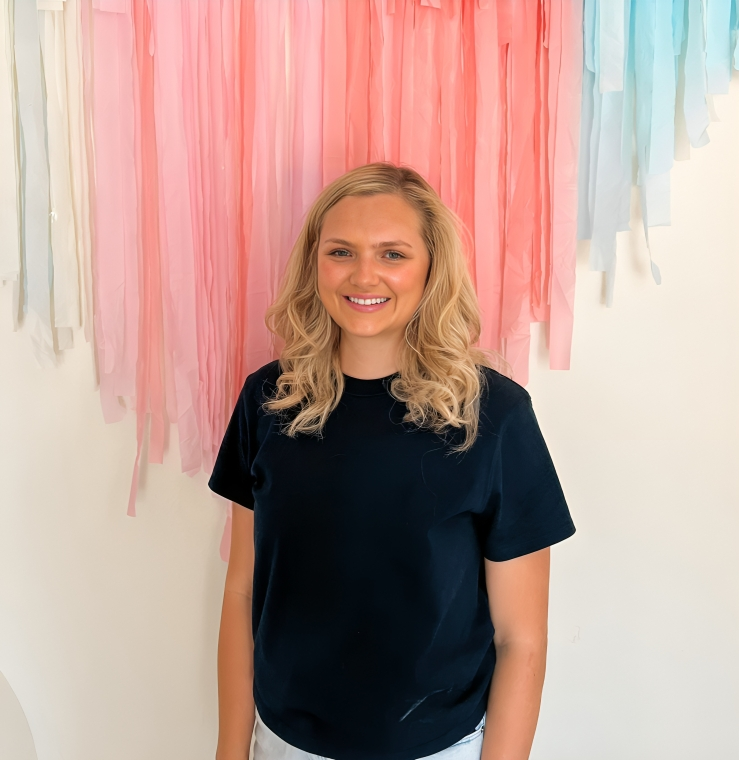How to DIY a Sensory Space for Your Home Without Breaking the Bank
Published on 2024-11-08
Picture this: It’s a Saturday afternoon, and your child has been invited to a birthday party at one of those sensory-inclusive indoor playgrounds. Your child is having the time of his life, and once you get home, you notice he isn’t the tornado of a tiny human that he normally is. You find yourself wishing you had a million dollars to build one of those fancy indoor playgrounds at your house.
What if I told you that you can accomplish the same type of outcome with a much lower cost approach? You just need a few items to focus on the different senses the body is trying to regulate with this type of play.
The body has eight senses that all play a role in a child feeling regulated or dysregulated. These senses are:
-
Visual
-
Auditory
-
Olfactory (smell)
-
Tactile (touch)
-
Gustatory (taste)
-
Vestibular (balance and head movement)
-
Proprioception (awareness of body in space)
-
Interoception (sensations inside the body , such as hunger, illness, heartbeat, bathroom needs, etc.)
A dysregulated child may display any combination of the following symptoms:
-
Inability to slow down/hopping from one activity to another
-
Trouble with focus
-
Difficulty falling asleep and staying asleep
-
Picky eating
-
Exaggerated emotional outbursts
-
Sluggish
-
Awkward, clumsy movements
-
Poor balance
-
Poor handwriting
-
Sensitivity to textures
-
Dislikes teeth being brushed or hair being washed
-
Anxiety
-
Frequently bumps into things or falls
-
High pain threshold
-
Can spin without getting dizzy
The above list is in no way exhaustive. While these symptoms are some of the most common, there are many other signs of dysregulation. Let’s go back to our imaginations for this: You’ve taken your child to a different kind of birthday party this time. It’s at a restaurant with an arcade. The party is coming to an end, and it’s time to tell your child to tell their friends goodbye. He immediately turns into a screaming, whining, sobbing mess and you have to carry him out of the venue. Your face is hot, your pulse is racing, and it is taking everything you have to not scream back at your child. It’s okay. We’ve all been there. This is a prime example of sensory dysregulation. You and your child have both been immersed in the overstimulation of bright lights, loud noises, and a crowded space.
Based on the above examples, we now can understand how the type of play a child engages in directly affects sensory regulation! The movement and heavy work required of the muscles in those snazzy indoor playgrounds can be very regulating. On the other hand, excessive amount of time interacting with tablets, smart phones, and video games can be extremely dysregulating. Dr. Victoria L. Dunckley’s book Reset Your Child’s Brain: A Four-Week Plan to End Meltdowns, Raise Grades, and Boost Social Skills by Reversing the Effects of Electronic Screen-Time does a wonderful job of explaining the science behind the problem with too much screen use. I won’t elaborate more on that here, but I highly recommend her book.
I know what you’re thinking: “There’s no way we can afford to go to indoor playgrounds all the time. And we don’t have time to go to the park every day!” That’s okay! No one has that kind of time and disposable income! You can create your very own sensory space in your home, and it will not cost an arm or even a leg. Here are some inexpensive items you can consider:
-
Vestibular and Proprioception
-
Mini trampoline with a DIY crash pad
-
This setup can give your child the big movements he may be craving as well as the crash landing that provides a big dose of input to his joints and muscles.
-
This can directly affect vestibular and proprioception and possibly decrease hyperactivity.
-
You can find mini trampolines for $40-$60 on a variety of websites.
-
You can create your own crash pad with a cheap duvet cover ($15-$20) that zips closed by just stuffing with old pillows, blankets, towels, and really anything else soft that you find lying around the house.
-
-
Exercise ball
-
These large exercise balls can be used for activities like playing “steamroller” by rolling the ball over the child for some deep pressure tactile input or having the child lie on his tummy on the ball and use his hands to walk forward and backward.
-
These can be found in a variety of stores and websites for as little as $15.
-
You can use your favorite educational/life hack social media platform to find more fun activities using exercise balls.
-
-
Body sock
-
A body sock is a wearable calming blanket that has some stretch to it to give the child calming heavy work to his muscles as well as some compression.
-
These are listed online for approximately $20-$30.
-
-
Spinning activity toy
-
These toys provide heavy work to the upper body while also giving the vestibular system input through spinning. Some even play music for added auditory input.
-
These are priced at around $30-$50
-
-
Rocking Horse $35
-
Bouncing inflatable horse - $26
-
-
Touch
-
Sequin board
-
For relaxing tactile sensory input, you can use a sequin board with reversible sequins, also known as mermaid sequins.
-
I made my own using a clearance canvas painting from one of the many home goods stores. I bought the mermaid sequin fabric online for $16 for a yard. Then, I used a staple gun to attach it to the canvas.
-
You can opt to mount this to a wall if you have a specific sensory space you intend to use or leave it unmounted if you want to be able to move it around.
-
-
-
-
Small rugs with varied textures
-
Check clearance and discount stores for these
-
-
Sensory bins
-
Think kinetic sand, rice, beans, cotton balls, pasta, etc.
-
Search online for creative ideas for sensory bins using inexpensive materials
-
Container with a variety of fidgets
-
Several of these can be found at dollar stores, and large variety packs are sold online for around $20.
-
-
-
Visual
-
Projection galaxy lights
-
There is a huge variety of these types of lights online, and they provide exceptionally calming visual input. The one I went with sells for approximately $15.
-
-
Hexagon touch lights
-
These also provide calming visual unput as well as cause/effect interaction. I have found these online for $30 for a pack of 6 lights.
-
-
Fiber optic light toys
-
Small fiber optic toys can be found for around $10-$15.
-
-
Retreat space
-
For a child who is easily over-stimulated, you can add a retreat space. This can be as simple as a blanket over a table or a simple pop-up tent. Some kids’ pop-up tents sell for as low as $20.
-
-
-
-
Liquid Motion Visual Timer/Sensory Bottle
-
You can create your own sensory bottles. The options for these are limitless, and you can just use your favorite search engine to find ideas for them.
-
You can also purchase liquid motion visual timers for around $10 for a pack of 3 of them.
-
-
-
Auditory
-
Play calming music for a child who seems overstimulated. Keep music slow and rhythmic.
-
For a child who is sluggish and unmotivated, try music that is more upbeat or even irregular in its rhythms.
-
-
Smell
-
Use an essential oil diffuser with calming/familiar scents
-
Floral and citrus scents are often the safest scents
-
-
-
Taste
-
Create a fun snack game using either a small plastic bead box/tackle box to offer familiar and unfamiliar snacks for the child to explore independently. Do not coerce or pressure tasting. The sensory space should be a safe space for your child to freely explore, but this is a way to expose him to unfamiliar foods. These containers sell for around $7-$10.
-
There is a fun matching game you can order online where you can place foods in the game board. Then, you just play as though it were a typical card matching game, but you are also exposing your child to different foods that he can touch, smell, see, and taste (if he chooses). This game is listed for around $20.
-
-
Interoception
-
You can help your child’s sense of interoception simply by joining with them in play and talking about body sensations along the way. This is important to remember: Do not TELL your child how you think he feels. Be curious. Say things like, “Jumping on the trampoline makes my heart beat fast! I wonder if your heart feels that way when you jump.”
-
*Important note: You do not need to buy all the items listed. You can tailor this space to your child’s needs and according to the amount of space you have available. If your child is showing extreme sensory difficulties, please reach out to your pediatrician for a referral to a licensed occupational therapist who is trained in sensory intervention. This article is not intended to replace skilled therapy for children who may require intervention.
Links to the products listed in this article are available in our Amazon Storefront!

